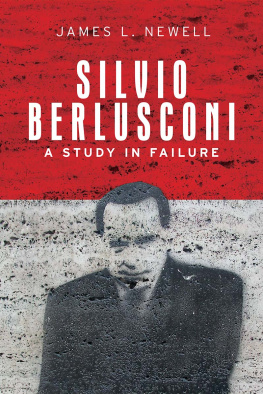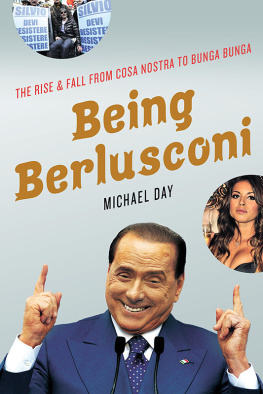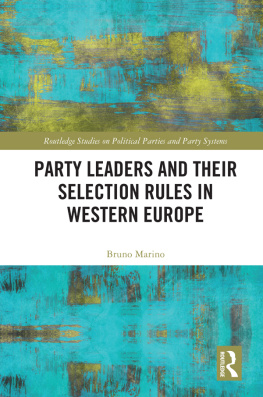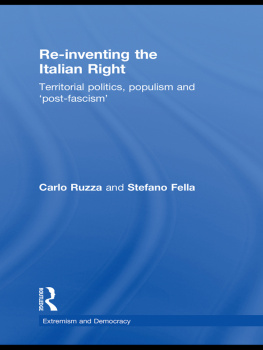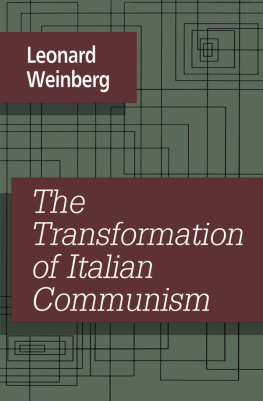Copyright James L. Newell 2019
The right of James L. Newell to be identified as the author of this work has been asserted by him in accordance with the Copyright, Designs and Patents Act 1988.
Published by Manchester University Press
Altrincham Street, Manchester M1 7JA
www.manchesteruniversitypress.co.uk
British Library Cataloguing-in-Publication Data
A catalogue record for this book is available from the British Library
ISBN 978 0 71907597 1 hardback
First published 2019
The publisher has no responsibility for the persistence or accuracy of URLs for any external or third-party internet websites referred to in this book, and does not guarantee that any content on such websites is, or will remain, accurate or appropriate.
Typeset by
Servis Filmsetting, Stockport, Cheshire
Some words about the context, personal and political, in which this book came to be written will help to make clear how it came to fruition, as well as the assumptions underlying and driving the material it contains. I wanted to write a biography of Berlusconi because he had attracted a volume of foreign media attention and comment unprecedented for an Italian political leader even the uninitiated among non-Italians I came across seemed to know who Berlusconi was and had a view on him, his notoriety seemingly surpassed only by that of Benito Mussolini himself and because his role in Italian politics seemed to lie at the heart of the extraordinary political upheavals that took place in Italy following, and directly connected with, the collapse of the Berlin Wall in 1989. These upheavals were unprecedented, political scientists routinely noting that the political transition they set in motion had only one analogue in post-war democratic Europe, namely, the transition in France from the Fourth to the Fifth Republic under the leadership of Charles de Gaulle.
It therefore struck me that a political biography of Berlusconi could potentially make a significant contribution to understanding the trajectory taken by Italian politics since the early 1990s, especially given that the upheavals and transition had brought with them important changes in the meaning, the scope and the role of political leadership. As others had pointed out, party and coalition leaders had acquired crucial and unprecedented electoral, political and institutional roles. Election campaigns, which until the 1980s had been entirely party-centred, were now dominated by coalition leaders, their personal characteristics and communication styles. Politically, the choice of leader played a crucial role in enhancing or diminishing the degree of cohesion of the coalition that she or he led. Institutionally, coalition leaders were now prime ministerial candidates playing a much more significant role in shaping their governments than was true of First Republic prime ministers who were entirely dependent on post-election balances of power within and between the governing parties. If, then, the roles played by coalition leaders had been of unusually large significance, it was a reasonable conjecture that the processes of change in the political system might have been considerably different had the identity and the characteristics of the individuals occupying the leadership positions been different.
The coalition leader who had had the highest profile was Silvio Berlusconi, who had dominated Italian politics in several ways. As the founder and leader of Forza Italia, the largest party on the centre right, he had been the true promoter the collant of his coalition. If he had in this way made a remarkable contribution to the establishment of bipolar competition in Italy, it remained an open question what would happen to the coalition if, and when, he left the political stage. As republican Italys longest-serving prime minister and as owner of Italys three largest private television stations, he occupied a combination of positions widely held to entail a significant conflict of interests, and this issue had rarely been far from the centre of substantive political debate either in Italy or in Europe more generally. He had introduced, or at least fuelled, a new style of populist politics in Italy and this, it had been suggested, reflected a wider phenomenon, going well beyond the countrys borders.
Though the project was conceived some years ago, the bulk of the book was not written until 2017; and yet now, at the beginning of January 2018, I am struck by the thought that, as it turned out, 2017 has been a good year in which to write the book, given that I had set myself the task of considering Berlusconis legacy: any earlier attempt to do so would have been premature given the extraordinary capacity he has shown to survive misfortunes and to stage comebacks thought by many to be impossible.
He may yet do so again. In 2017 he celebrated his 81st birthday, and though he was still a party leader with a high profile on the Italian political stage, he no longer set the agenda to the extent he had done in the past even in opposition, his role seemingly confined more or less to reacting to initiatives taken by others. But during the second half of the year there were signs of a revival of his political fortunes. Local elections in June saw his party make significant gains in alliance with the Northern League and the right-wing Brothers of Italy; and the Sicilian regional elections on 5 November saw the centre-right coalition of which he was a part emerge victorious, seeing off a significant challenge from the Five-star Movement (M5S) in the process. It seemed unlikely that he would be able once again to become prime minister following the general election due to be held on 4 March 2018; his 2013 conviction for tax fraud had resulted in him being banned from holding public office for six years in accordance with anti-corruption legislation passed in 2012, and although he had challenged the legislation before the European Court of Human Rights in November 2017, most informed commentators did not expect a verdict for at least six months. But despite this, in voting intentions polls his party had regained its pre-eminence on the centre right, having for several months been overtaken by the Northern League, and the polls suggested a growing advantage over the other contenders for the centre-right parties generally.
At the end of 2017, then, some of the assumptions that had been made at the time that most of these chapters were drafted seemed slightly less secure; for, if Berlusconis definitive eclipse was less completely certain, then so too was the solidity of the party-political changes of which he had been a leading protagonist. That is, if the future had seemed set to be one of bipolar competition spearheaded by two main prime ministerial contenders, each competing for overall majorities, then at the end of 2017 this was very unclear. The assumption had already been placed in doubt by the explosion in support for the M5S at the general election of 2013; but it remained to be seen whether that party could manage, and survive, the competing pressures of government on the one hand and its role as a protest party on the other. 2016 had seen it take over the reins of government in a number of important municipalities, and notwithstanding periodic accusations of poor judgement on the part of some of its representatives and occasional allegations of improbity on the part of others, it became clear as 2017 progressed that the party was not going to disappear any time soon. As a formation whose appeal is based precisely on popular perceptions of incompetence and dishonesty on the part of mainstream politicians, and on the claim to offer a radical alternative, it might have expected to be especially vulnerable to the charges levelled against it; but people vote for the M5S simply because it represents something different from a political class in whom vast swathes have virtually no confidence. By the end of 2017, then, it was clear that the following years election was going to be at least a three-horse race, with no certainty about whether there would be an overall majority for any of them or any certainty, if that were the case, about what the composition of the resulting government would be.

